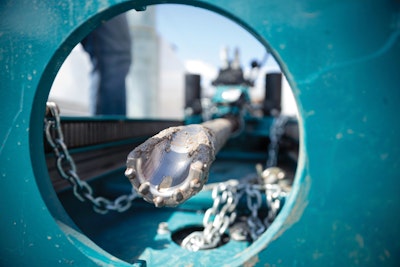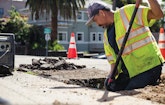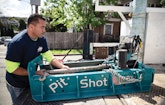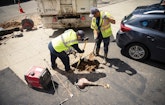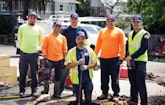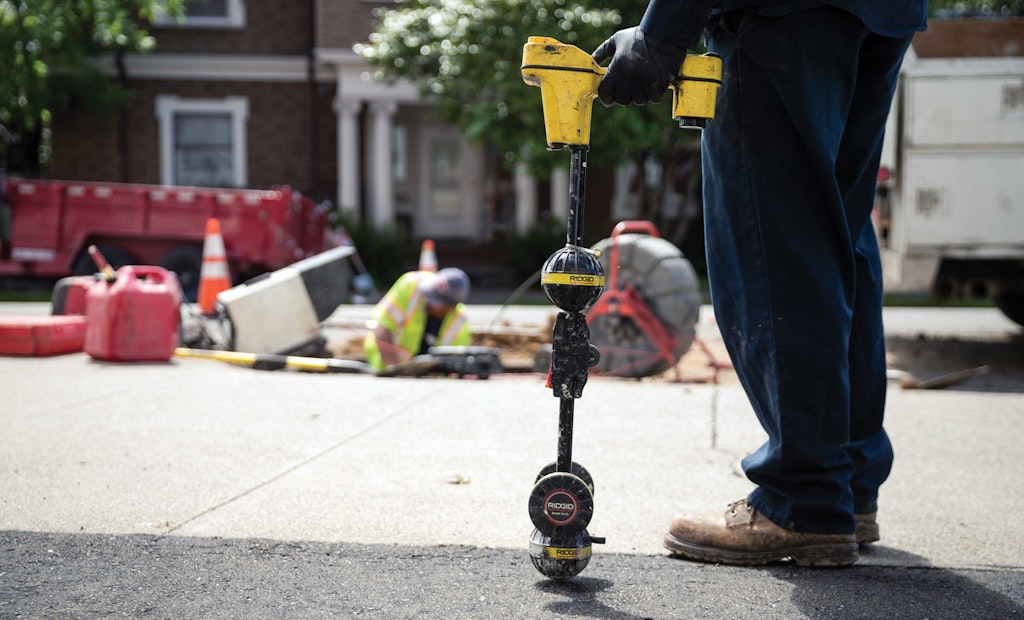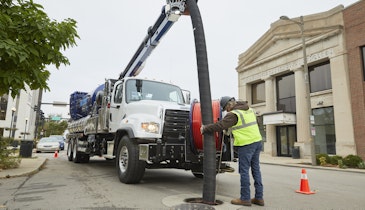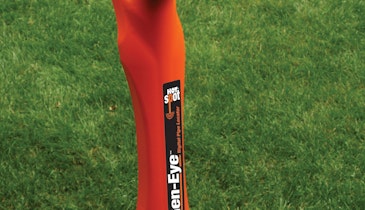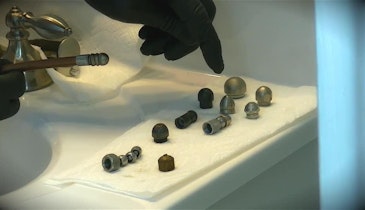At its peak growth, Ray Ramirez’s company had 12 technicians — but in 2018, they reached milestone revenue with less than half that number.
“One of the reasons I decided to keep fewer technicians is because it’s easier to manage the technicians, and it’s easier to manage all the expenses,” Ramirez says. “It’s not necessarily by having more technicians that you’re making more money. With fewer technicians, we generated more revenue than with 12.”
The company, General Plumbing and Rooter, is a plumbing service and repair contractor in the San Francisco Bay Area in Northern California. Last year, they broke the $2 million revenue mark after several years of staff optimization and shifting the company’s primary services to drain cleaning and pipe bursting.
Downsizing his staff helped achieve a perfect equilibrium for maximizing profits, but it wasn’t solely adjusting his roster that boosted revenue for Ramirez. Over the past year, he has also prioritized drain cleaning over his other plumbing services, shifting from 60% plumbing to now 65% drain cleaning.
While plumbing services, including drain cleaning, make up a good portion of the company’s services, Ramirez has also focused on repair and replacement. Leaning into trenchless methods, primarily pipe bursting, has also allowed the company to grow its revenue while maintaining the smaller staff.
Innovation equals profit
“I’ve always liked the idea of doing pipe bursting,” Ramirez says of the trenchless specialty. “Pipe bursting equipment can save a lot of time, money and energy.”
A preference among inspectors for pipe bursting has made it a preferred method in his service area, putting his specialization in high demand.
“Around 2005, I purchased my first pipe bursting equipment. A few friends who were plumbers, working for themselves, started calling me to do their pipe bursting,” Ramirez says. “Then obviously I was doing jobs for my company, for myself.”
Ramirez has been a committed customer of RODDIE, investing in two of their pipe bursting systems over the years. He started with the R2 system, which worked so well for him that he also purchased the RX-30. When his brother, who had worked with him for 12 years, decided to branch off and start his own company, Ramirez sold him the R2, along with some other older equipment. His brother liked it so much that he later bought himself an RX-30 too.
Assisting in his trenchless work is an LD-12 leak detection system from SubSurface Instruments and a Pit Shot directional drill, also from RODDIE.
Pipe bursting and trenchless has done so well for him that Ramirez would like to help promote it across the broader industry.
“I’m very familiar with pipe bursting, and I think there are some states, there are some countries, that can benefit from pipe bursting,” he says. “I have some acquaintances in other states, and they’re not sure what pipe bursting is, even in the U.S. They don’t know anything about pipe bursting; they don’t know anything about trenchless. So I would love to make time to show this equipment to more people so they can benefit from it.”
Hooked on service
Upon opening for business in 2004, the most lucrative avenue for Ramirez became servicing for home warranty companies. During the home-buying boom of that time, the work was gangbuster. Of course, it didn’t last long.
“We were really busy. I couldn’t handle it: There was so much work. My first year I think we had 12 technicians working for me,” Ramirez says. “But that was because of the bubble: The houses were selling like pancakes, especially here in California, and they were selling for a lot of money. The banks were giving loans to everyone, anyone, so it was good at that point, between 2004 and 2007. We were extremely busy. In 2007, everything crashed. The houses weren’t selling, houses were on foreclosure, and so I stopped work for the home warranties.”
It was at that point he scaled down to six technicians, put an ad in the phone book and started working directly with customers. Before starting his own company, Ramirez had worked in the industry for many years. He always wanted to focus on service and repair work, which he prefers because he enjoys being able to help people in a more personal way, so he never really considered switching to new construction.
“I have a few friends who do new construction; they’ve done both and keep telling me that service and repair is more difficult because you cannot see the plumbing. To find the leak, you kind of have to diagnose it and do some troubleshooting,” he says. “I really like the challenge — being able to find a leak that nobody else could find or replace a line that some people just walked away from.”
Especially on hydrojetting jobs, Ramirez often finds himself as the second or third call, after other plumbers failed to clear the line with other means.
“A lot of times we go to homes and the customer says, ‘Well we had two or three different companies come out and they couldn’t clear the line.’ Later we go out there with the hydro jetter. We tell them, ‘If the pipe is not collapsed, this hydro jetter will clear the line for sure.’”
Hydrojetting has also been a boon to the company’s stability, second only to pipe bursting.
After purchasing a mobile hydro jetter from Spartan Tool, Ramirez found a lot of work subcontracting for plumbers who don’t have such advanced equipment. The Spartan Tool Soldier hydro jet — along with a drain cleaner from Gorlitz Sewer & Drain and inspection equipment from RIDGID and Vivax-Metrotech — has pushed drain cleaning to the top of their service list.
“We get compliments from inspectors. Most plumbers can’t stand inspectors, for obvious reasons. When you hear something positive from inspectors, that means you’re doing something good,” Ramirez says. “I like to invest money in the best tools. One of the reasons my guys are very effective is because they have the right equipment, the best equipment out there.”
Lasting solutions
The two favored technologies, hydrojetting and pipe bursting, go hand in hand from a business standpoint. Ramirez is frequently able to leverage a drain cleaning into a pipe bursting job and has a convincing pitch for just such occasions.
“I tell the customer: ‘This hydro jetter is just going to cut the roots; it’s not going to fix the line. The roots are going to grow back, and you’re going to call us again one year, two years, three years from now. This is just something temporary so you can get some time to think about replacing the lateral. It’s just a matter of time before the line collapses or something else happens.’
“We try to push for replacement with pipe bursting,” he says. “When customers ask my opinion about what to do in their situation, I tell them: ‘If this was my house, I would clean the line because I have the equipment and I can do it.’” But there’s more to the story.
As a homeowner, Ramirez actually experienced root intrusion in a sewer lateral and did just that — decided he would simply clear the line himself whenever necessary, which worked until the day it backed up while he was out of town.
“I was probably two hours away and my wife couldn’t do laundry or dishes, couldn’t take a shower, couldn’t do anything. And I had two little kids. She goes, ‘You have to fix the line. You have to replace it.’ So I had to replace it because my wife told me to,” he says with a laugh. “I use that whenever a customer asks me that question; I always tell them about that story: If you ask my wife, she will tell you — replace it.
“We always recommend replacement of the line,” Ramirez says. “We run the camera, and if we see the line is full of roots, we clear it and tell them, ‘OK, this line is a perfect candidate for pipe bursting, right now, today. But if one of those connections collapses because of the root intrusion, pipe bursting is not an option anymore. You will have to jackhammer the sidewalk, do the repair and then pull a new line in — it will cost you a lot more money.’”
A full plate
Running one company wasn’t enough for Ray Ramirez, who recently started two side ventures: a landscaping company and a house-flipping operation.
Now that his plumbing service and repair company, General Plumbing and Rooter, is running smoothly, he decided to flip some houses. One thing led to the next and an opportunity presented itself via one of his tenants, a landscaper specializing in interlocking pavers.
But his time is limited, what with the two businesses already on his plate, so he has filled the role of mentor and business guru.
“I was very honest with them upfront, and I told them: ‘OK, I can help you with the contract license and I can help you with equipment because I already have the equipment. I’m not going to be able to help you with my time because I’m already tied up with a company and with my other work.’
“With my experience running my company, I told them this is what I can do, this is what you need to do, and this is what we all need to do. And it has worked,” Ramirez says. “In our first year — last year — we did over $700,000 in gross revenue. That was really impressive for the first year.”
